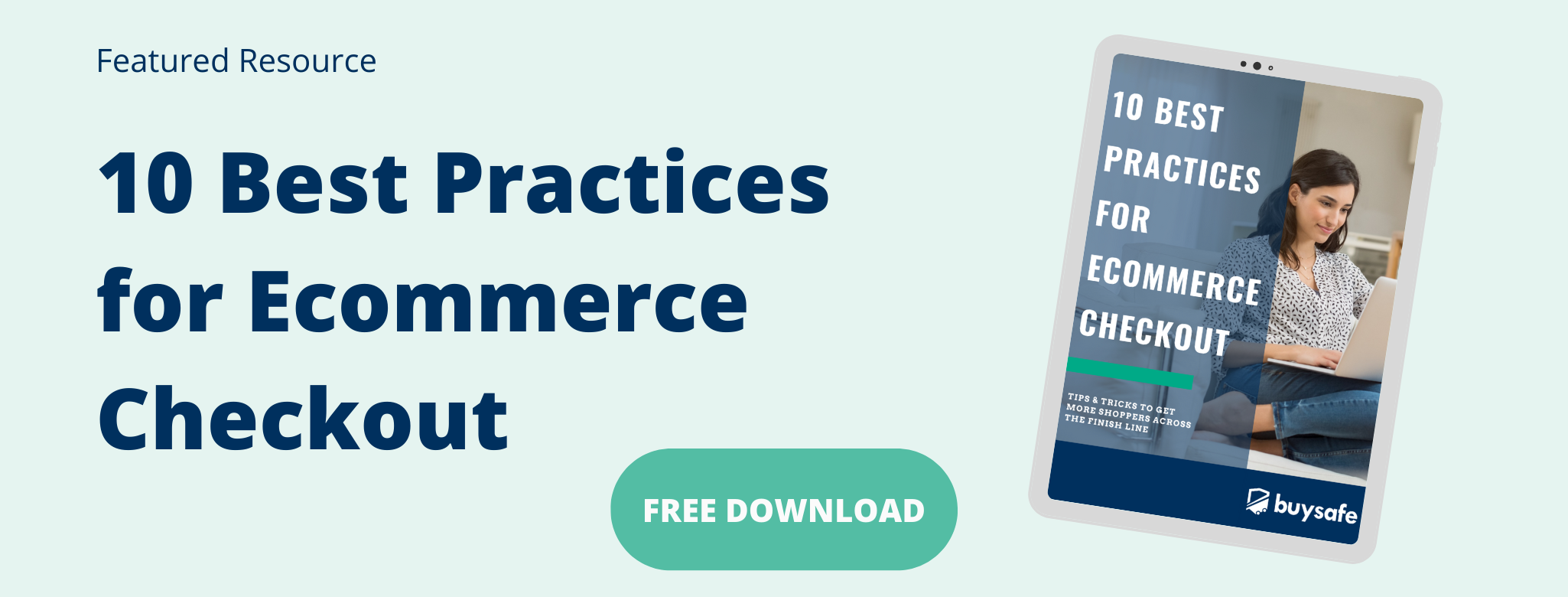

For the latest on ecommerce tips and best practices.
Do Customers Trust Your Ecommerce Store?

Customer trust is hard to gain and easy to lose—especially in today’s ecommerce landscape. And with the rise of fraudulence in the ecommerce space, customers are increasingly skeptical and even more picky about where they shop. When buying from a website for the first time, most shoppers are looking for proof that the ecommerce store is reputable—so don’t let one overlooked detail be a red flag that loses a sale.
Do You Know Where You Stand?
So, where do you stand? A great way to determine if you’ve earned your customers’ trust is by looking at overall store performance. Customers who trust your store buy from your store—you can easily observe trust in your sales. Distrust is a bit more difficult to pin down but is highly reflected in:
- Low conversion rates
- High cart abandonment rates
- Few repeat purchases
- Little to no engagement
Keeping a close eye on these distinct markers is important. Once you identify underperformers, you can continually optimize your ecommerce store to meet customer preferences. You may not be able to please everyone, but you can certainly delight most.
Free Download: 10 Best Practices for Ecommerce Checkout
Steps To Building Customer Trust
Security
Data breaches are commonplace in the current digital landscape and are a major concern when shopping online. Show customers that their safety and security is a top priority. Whether you use encryption, ID guarantees , or a trust seal, you need to invest in your customers’ digital landscape and reassure them that their data is secure.
Content
Have a comprehensive content strategy in place, and take the time to produce quality content that reflects current market concerns. With a few well-crafted blogs, you can show customers that a trustworthy merchant professionally operates your ecommerce store.
However, quality content doesn’t just mean blogs, articles, and ebooks. Providing detailed product information that accurately reflects the product and specifically answers “online” questions (i.e., texture, fabric, color, size, weight, etc.) eases the customer’s mind as well. And the more informed the customer is about a product, the more comfortable they are when getting ready to buy.
In addition to high-quality content, a Frequently Asked Questions (FAQ) page can go a long way toward promoting trust. Create an FAQ page that answers common customer questions. Not sure what those might be? Chat with customer service representatives to find out what people commonly ask. Not all customers are willing to reach out to customer service to get answers to simple questions, so providing the answers in an easy-to-reach format on your site will keep them from clicking away.
Communication
Reviews and testimonials can calm a customer’s nerves—social proof from others that your site is reputable and secure helps to reassure buyers. If customers see that others had great results after buying from you, their worries will be put to rest.
Check out these popular review sites, and ask your best customers to review your page or offer an incentive for those who do:
Always be available for customer inquiries—that means having a customer service team readily available to answer questions. If a customer can easily reach out and talk to a representative, they’ll feel more comfortable about making a purchase. Make sure that contact information is prominently displayed across the store—the less work a buyer has to do to get an answer, the better. Chatbots are also a great way to easily interact with customers when they have a question.
Measuring Your Results
If you’ve reviewed your current processes and optimized your ecommerce store, then you’re probably wondering, “How do I know if my efforts have paid off?” Well, there are a few metrics you can easily track to measure the effectiveness of your optimization.
- Sales—are people making more purchases? This is an obvious one. If you see your sales start to increase, it’s a good sign that your efforts are working.
- Returning Users—are people coming back to visit? A good sign that people find your site trustworthy is whether or not they are willing to return and shop with you again.
- Customer Engagement—people who engage with your brand via your website, social media, or reviews. If they’re willing to share their positive experiences or give a shout-out to your products, it means they trust your brand enough to associate themselves with it personally.
Final Thoughts
It’s important to carefully monitor the aforementioned markers—like conversions, cart abandonment, and engagement—for signs of growing (or deteriorating) customer trust. Lack of trust not only stops a sale but also limits other opportunities to connect. And once a customer has a negative personal perception of your brand, it can be hard to shake that reputation.
Stay in the know
Subscribe to the buySAFE blog and receive the latest in ecommerce best practices.



